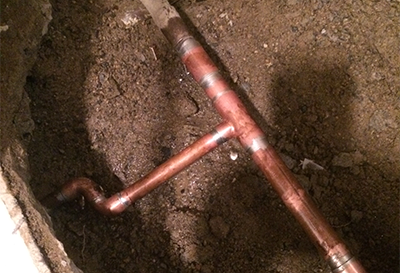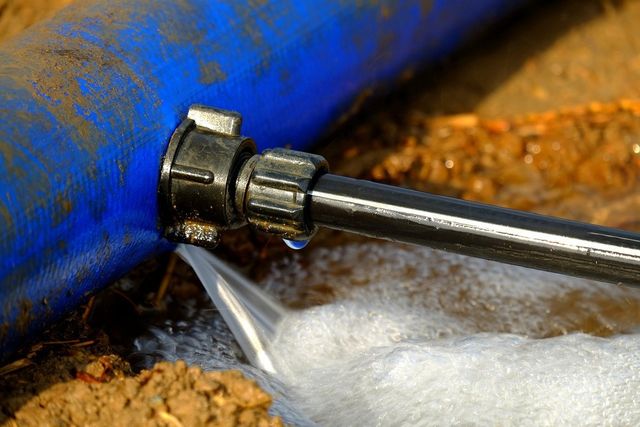Overview To Water Leak Detection At Home
Click HereWhat're your insights and beliefs on Detecting hidden plumbing leaks?

Early discovery of dripping water lines can alleviate a possible catastrophe. Some little water leakages may not be visible.
1. Check Out the Water Meter
Checking it is a guaranteed method that aids you find leaks. If it relocates, that shows a fast-moving leak. This indicates you might have a slow leak that might even be underground.
2. Examine Water Consumption
Evaluate your water bills as well as track your water usage. As the one paying it, you need to observe if there are any discrepancies. If you detect sudden changes, regardless of your usage coinciding, it means that you have leaks in your plumbing system. Remember, your water costs must fall under the very same range monthly. A sudden spike in your bill suggests a fast-moving leak.
At the same time, a steady boost each month, despite having the same practices, reveals you have a slow-moving leakage that's also slowly intensifying. Call a plumber to thoroughly examine your residential or commercial property, especially if you feel a cozy location on your floor with piping underneath.
3. Do a Food Coloring Test
When it comes to water consumption, 30% originates from bathrooms. Test to see if they are running properly. Decline specks of food shade in the storage tank and wait 10 mins. There's a leakage between the container as well as bowl if the shade in some way infiltrates your bowl throughout that time without flushing.
4. Asses Exterior Lines
Do not forget to inspect your outdoor water lines as well. Test faucets by connecting a yard hose. Must water seep out of the connection, you have a loosened rubber gasket. Replace this and guarantee all links are limited. If you have actually got an automatic sprinkler, it will certainly assist get it skillfully checked out as well as preserved every year. One tiny leakage can lose lots of water as well as surge your water expense.
5. Evaluate and also Examine the Circumstance
Home owners must make it a practice to inspect under the sink counters and also also inside closets for any type of bad odor or mold development. These 2 warnings indicate a leakage so punctual interest is required. Doing regular assessments, even bi-annually, can save you from a major problem.
More importantly, if you know your home is currently old, maintain a watchful eye on your heating systems, pipes, pipes etc. Check for discolorations as well as damaging as most home appliances as well as pipes have a life span. They will likewise normally degrade as a result of tear and also put on. Do not wait for it to intensify if you think dripping water lines in your plumbing system. Call a professional plumber as soon as possible so you do not end up with a terrible mess in your house.
Early detection of leaking water lines can minimize a potential catastrophe. Some little water leakages may not be visible. Checking it is a guaranteed way that helps you find leaks. One small leakage can throw away loads of water as well as surge your water bill.
If you suspect leaking water lines in your plumbing system, don't wait for it to escalate.
WARNING SIGNS OF WATER LEAKAGE BEHIND THE WALL
PERSISTENT MUSTY ODORS
As water slowly drips from a leaky pipe inside the wall, flooring and sheetrock stay damp and develop an odor similar to wet cardboard. It generates a musty smell that can help you find hidden leaks.
MOLD IN UNUSUAL AREAS
Mold usually grows in wet areas like kitchens, baths and laundry rooms. If you spot the stuff on walls or baseboards in other rooms of the house, it’s a good indicator of undetected water leaks.
STAINS THAT GROW
When mold thrives around a leaky pipe, it sometimes takes hold on the inside surface of the affected wall. A growing stain on otherwise clean sheetrock is often your sign of a hidden plumbing problem.
PEELING OR BUBBLING WALLPAPER / PAINT
This clue is easy to miss in rooms that don’t get much use. When you see wallpaper separating along seams or paint bubbling or flaking off the wall, blame sheetrock that stays wet because of an undetected leak.
BUCKLED CEILINGS AND STAINED FLOORS
If ceilings or floors in bathrooms, kitchens or laundry areas develop structural problems, don’t rule out constant damp inside the walls. Wet sheetrock can affect adjacent framing, flooring and ceilings.
https://www.servicemasterbyzaba.com/blog/how-to-detect-water-leakage-in-walls/

As a fervent person who reads about Top leak detection hacks, I thought sharing that blog post was a good idea. Sharing is caring. Helping others is fun. I am grateful for your time. Visit again soon.